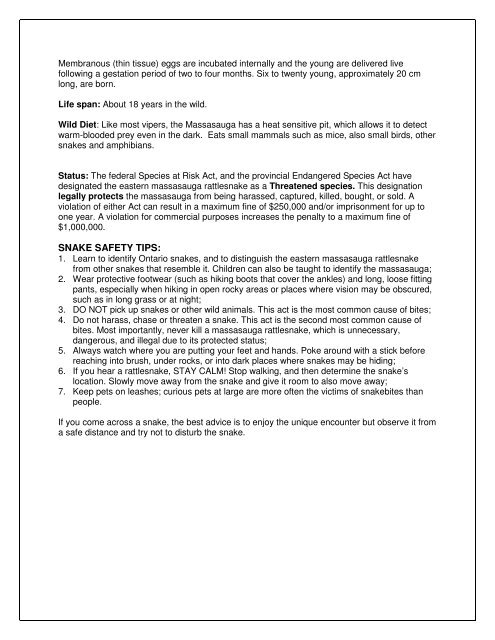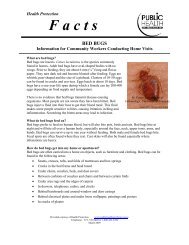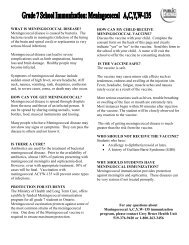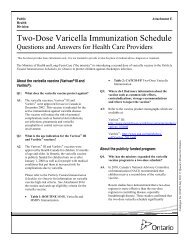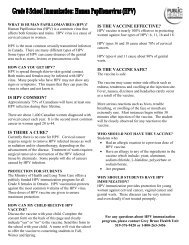Eastern Massasauga Rattlesnake - Fact Sheet - Grey Bruce Health ...
Eastern Massasauga Rattlesnake - Fact Sheet - Grey Bruce Health ...
Eastern Massasauga Rattlesnake - Fact Sheet - Grey Bruce Health ...
You also want an ePaper? Increase the reach of your titles
YUMPU automatically turns print PDFs into web optimized ePapers that Google loves.
Membranous (thin tissue) eggs are incubated internally and the young are delivered live<br />
following a gestation period of two to four months. Six to twenty young, approximately 20 cm<br />
long, are born.<br />
Life span: About 18 years in the wild.<br />
Wild Diet: Like most vipers, the <strong>Massasauga</strong> has a heat sensitive pit, which allows it to detect<br />
warm-blooded prey even in the dark. Eats small mammals such as mice, also small birds, other<br />
snakes and amphibians.<br />
Status: The federal Species at Risk Act, and the provincial Endangered Species Act have<br />
designated the eastern massasauga rattlesnake as a Threatened species. This designation<br />
legally protects the massasauga from being harassed, captured, killed, bought, or sold. A<br />
violation of either Act can result in a maximum fine of $250,000 and/or imprisonment for up to<br />
one year. A violation for commercial purposes increases the penalty to a maximum fine of<br />
$1,000,000.<br />
SNAKE SAFETY TIPS:<br />
1. Learn to identify Ontario snakes, and to distinguish the eastern massasauga rattlesnake<br />
from other snakes that resemble it. Children can also be taught to identify the massasauga;<br />
2. Wear protective footwear (such as hiking boots that cover the ankles) and long, loose fitting<br />
pants, especially when hiking in open rocky areas or places where vision may be obscured,<br />
such as in long grass or at night;<br />
3. DO NOT pick up snakes or other wild animals. This act is the most common cause of bites;<br />
4. Do not harass, chase or threaten a snake. This act is the second most common cause of<br />
bites. Most importantly, never kill a massasauga rattlesnake, which is unnecessary,<br />
dangerous, and illegal due to its protected status;<br />
5. Always watch where you are putting your feet and hands. Poke around with a stick before<br />
reaching into brush, under rocks, or into dark places where snakes may be hiding;<br />
6. If you hear a rattlesnake, STAY CALM! Stop walking, and then determine the snake’s<br />
location. Slowly move away from the snake and give it room to also move away;<br />
7. Keep pets on leashes; curious pets at large are more often the victims of snakebites than<br />
people.<br />
If you come across a snake, the best advice is to enjoy the unique encounter but observe it from<br />
a safe distance and try not to disturb the snake.


